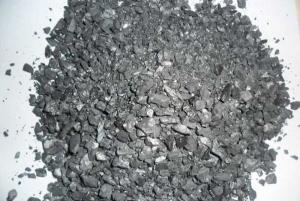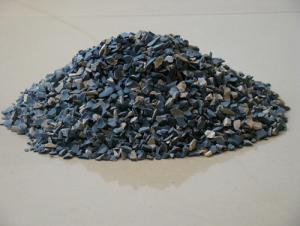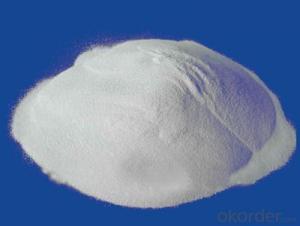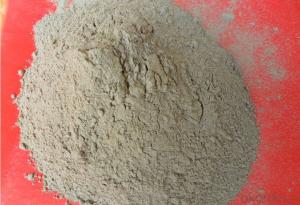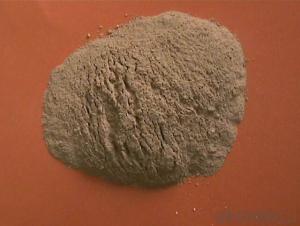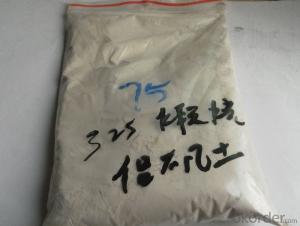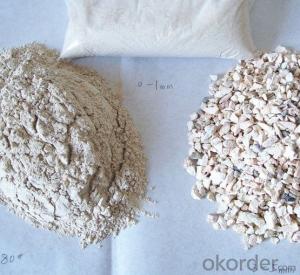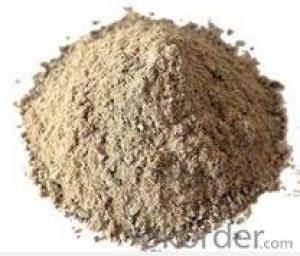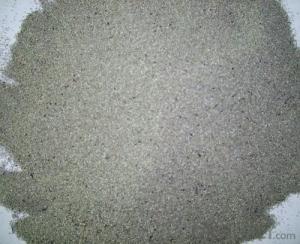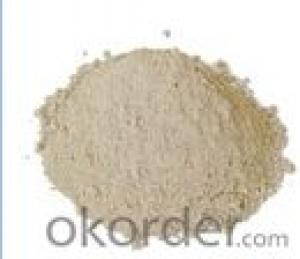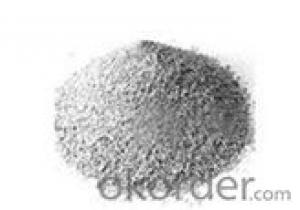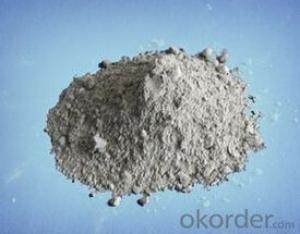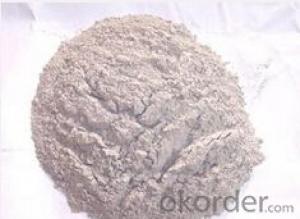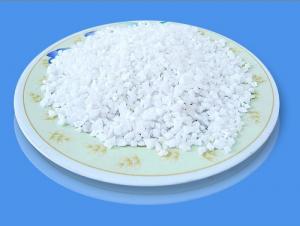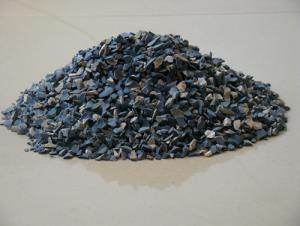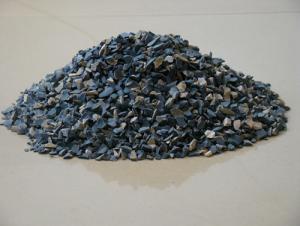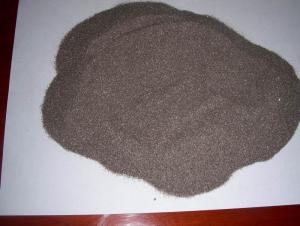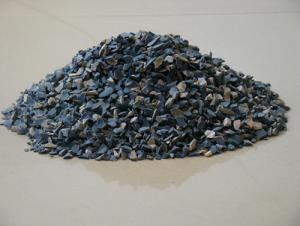Raw Materials for Light Weight Insulation Refractory Castable
- Loading Port:
- China Main Port
- Payment Terms:
- TT OR LC
- Min Order Qty:
- -
- Supply Capability:
- -
OKorder Service Pledge
OKorder Financial Service
You Might Also Like
Specifications
1. Easy construction.
2. Can according to customers' requirements.
3. Used for various high-temperature industrial kilns.
Light weight heat insulation refractory castable,Insulating castable,Insulation castable
Insulation castable is one of the unshaped refractory materials. It is made of refractory aggregate, refractory powder, binders and other additives. It is loose, No fixed shape,Has high liquidity, Casting and vibration molding,Can use directly or use after add appropriate water or other liquid. It is one of the new type refractory material of don't need calcination.
Construction way:casting+vibration moulding
Features:
1. Low bulk density.
2. Low thermal conductivity.
3. High strength.
4. Good thermal and insulation properties.
Physical and chemical index:
Item | Light-weight Hi-strength refractory castable | |||||||
ZYQ-0.6 | ZYQ-0.8 | ZYQ-1.0 | ZYQ-1.1 | ZYQ-1.3 | ZYQ-1.5 | ZYQ-1.8 | ||
Volume Density (g/cm3) ≤ | 0.6 | 0.8 | 1.0 | 1.1 | 1.3 | 1.5 | 1.8 | |
Compressive Strength, (MPa) | 110°C×16h ≥ | 1.5 | 2.0 | 4.0 | 5.5 | 7.5 | 15 | 15 |
1000°C×3h ≥ | - | 2.0 | 5.5 | 6.5 | 10 | 20 | 40 | |
Heat Conductivity Coefficient (W/m·K) | 700°C ≤ | 0.15 | 0.25 | 0.35 | 0.40 | 0.45 | 0.60 | 0.65 |
1000°C ≤ | 0.20 | 0.25 | 0.40 | 0.45 | 0.50 | 0.70 | 0.75 | |
Linear Variation (%);1000°C×3h ≤ | -0.25 | -1.0 | -0.5 | -0.5 | -0.5 | -0.5 | -0.5 | |
Safe Use Temperature (°C) | 800 | 1000 | 1100 | 1200 | 1300 | 1350 | 1350 | |
Application:
1. Furnaces of metallurgy industry, heat treatment furnace.
2. Furnace of incineration of garbage, recirculating fluidized bed furnace.
3. Furnaces of chemical industry and construction industry.
FACTORY:
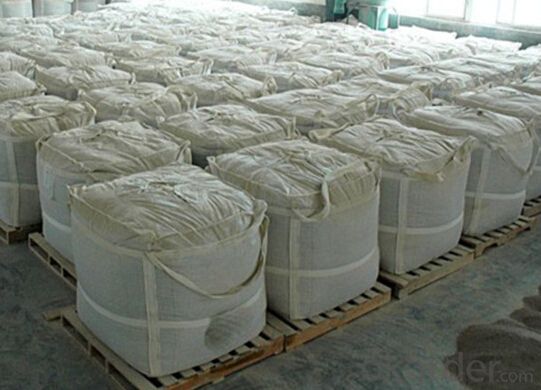
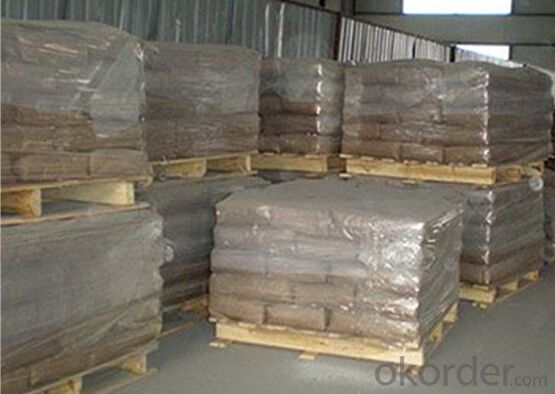
- Q: What is the fire resistance thickness of the thin fire-retardant coatings?
- There is no detailed requirement on the thickness of the thin steelwork fireproof coatings and the thickness there refers to a certain thickness which must(at least) have fire resistance for a certain time. The thickness of fireproof coatings in engineering generally depends on the manufacturer's test reports. Our thin steelwork fireproof coatings: the fire resistance is 2.5 hours, the thickness is 4.9 mm, the fire resistance is 2.0 hours, the thickness is 3.5 mm, the fire resistance is 1.5 hours, the thickness is 1.75 mm, the fire resistance is 1.0 hours, the thickness is 1.17 mm.
- Q: what are the requirements of fireproofing material?
- The producing process of fire and moth proof wood: firstly, put general wooden materials into solution with calcium, aluminum and other cations, then soak it into the solution with phosphate radical, silicate and other anions. Thus, the two ions will be carried out chemical reaction in the wood, forming a ceramic-like material, and intimately fill the voids of cells, so that the wood has the fireproofing and mothproof properties.
- Q: What dose the fireproof and thermal insulation material include?
- It includes A1: Non-combustible inorganic monomer; A2 Non-flammable organic compound, namely composite material; A3 Modified phenolic fireproof materials.
- Q: What is the material composition of the new fire-resistant coating?
- New fire-resistant coating generally consists of base material, dispersion media, flame retardants, fillers, additives (plasticizers, stabilizers, waterproofing agents, moisture, etc.). (1) Base material is the basis of the composition of the coating, and it is the main film-forming substance, playing a decisive role in coating performance . For fire-resistant coating, its base material must be capable of matching with the flame retardant to constitute an organic fireproofing system. The base material commonly employed at home and abroad includes inorganic and organic film-forming material. Inorganic film-forming materials include silicate. Si03, K2 Si03Na2 Si03), silica and phosphate [Al. (HPO.). ] ect. There are a wide range of organic film-forming substance, usually flame retardent organic synthetic resins, such as phenolic resins, halogenated alkyd resins, polyester, halogenated olefin resins (such as vinyl chloride resin), amino resin (melamine resin, urea resin, etc. ), tar-based resins, furan resins, heterocyclic resins (e.g., polyamide-imide, polyimide, etc.), organic elements resins (e.g. silicone resin), rubber (halogenated rubber such as chlorinated natural rubber) and so on. There are numerous latex taking water as solvent. www.hc3600.
- Q: What are the fire resistances of grc partition panels?
- It's ok, calcium silicate itself is a non-combustible material. Light partition walls with keels has the longest fire resistance of 4 hours according to the thickness of the walls. We can talk about it in detail.
- Q: How is the fire endurance of the fireproof paint?
- second level firerpoof of cooling rack. with a fire endurance from 1 to 1.5 hours. According to the code for fire protection design of buildings. 1. fireproof grading of first level is 1.5 hours 2, fireproof grading of second level is 1.0hour.
- Q: What is the fire endurance of fireproof glass cotton?
- of course,A level is better. A-class is non-combustible, class B is fire retardant, rock wool fire resistance is 800 ℃, glass wool fire resistance is 450 ℃ , class B has a relatively better thermal insulation effect, hope it can solve your doubts.
- Q: Is the refractory reached British BS standard and used for cables in China at present ceramic silicone rubber?
- The texture should be designed according to the British relevant BS standard; crosslinked polyethylene or ethylene propylene rubber under 6600V to 19000 / 33000V is not necessarily ceramic silicone. The rated voltages of a small amount of smoke and corrosive gases from 3800 & # 47 when the BS 7835-2000 is affected by fire.
- Q: Is there anyone who can explain how to grade the level of fire insulation board?
- The classification of fire proof level for thermal insulating material 1, Burning performance of building material can be classified into the following several grade according to national standard GB8624-97: Non combustible building materials: Non-conbustible material. Class B1: Refractory building materials: Flame retardant materials have good flame retardant effect.
- Q: What is neutral refractory? Can refractory suppliers tell the main components of it?
- The material using Al2O3, clay, bauxite and corundum as the main components is neutral material; the material using MgO and CaO as the main components is basic material; the material using SiO2 as th emain component is acidic material.
Send your message to us
Raw Materials for Light Weight Insulation Refractory Castable
- Loading Port:
- China Main Port
- Payment Terms:
- TT OR LC
- Min Order Qty:
- -
- Supply Capability:
- -
OKorder Service Pledge
OKorder Financial Service
Similar products
Hot products
Hot Searches
Related keywords




